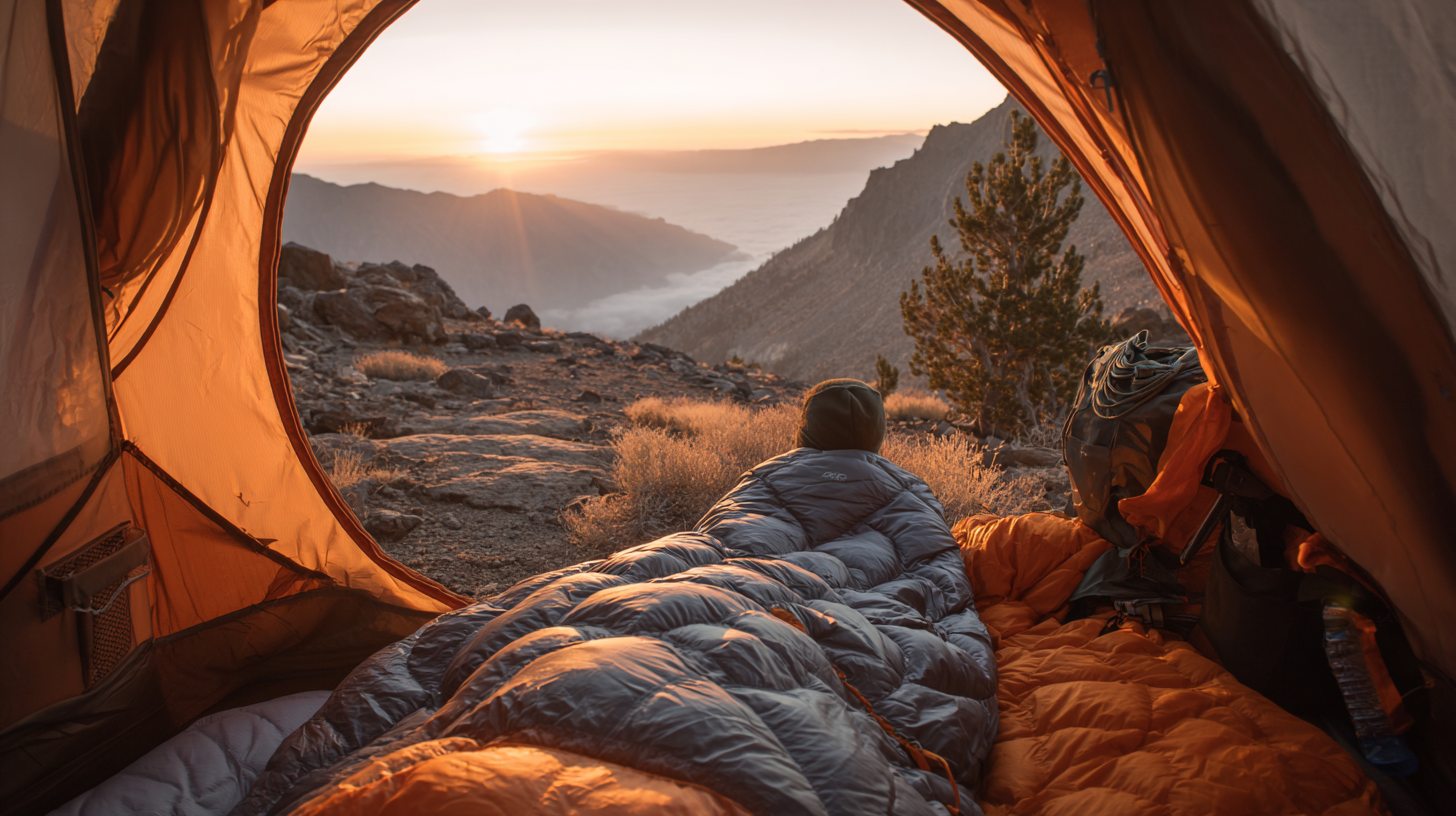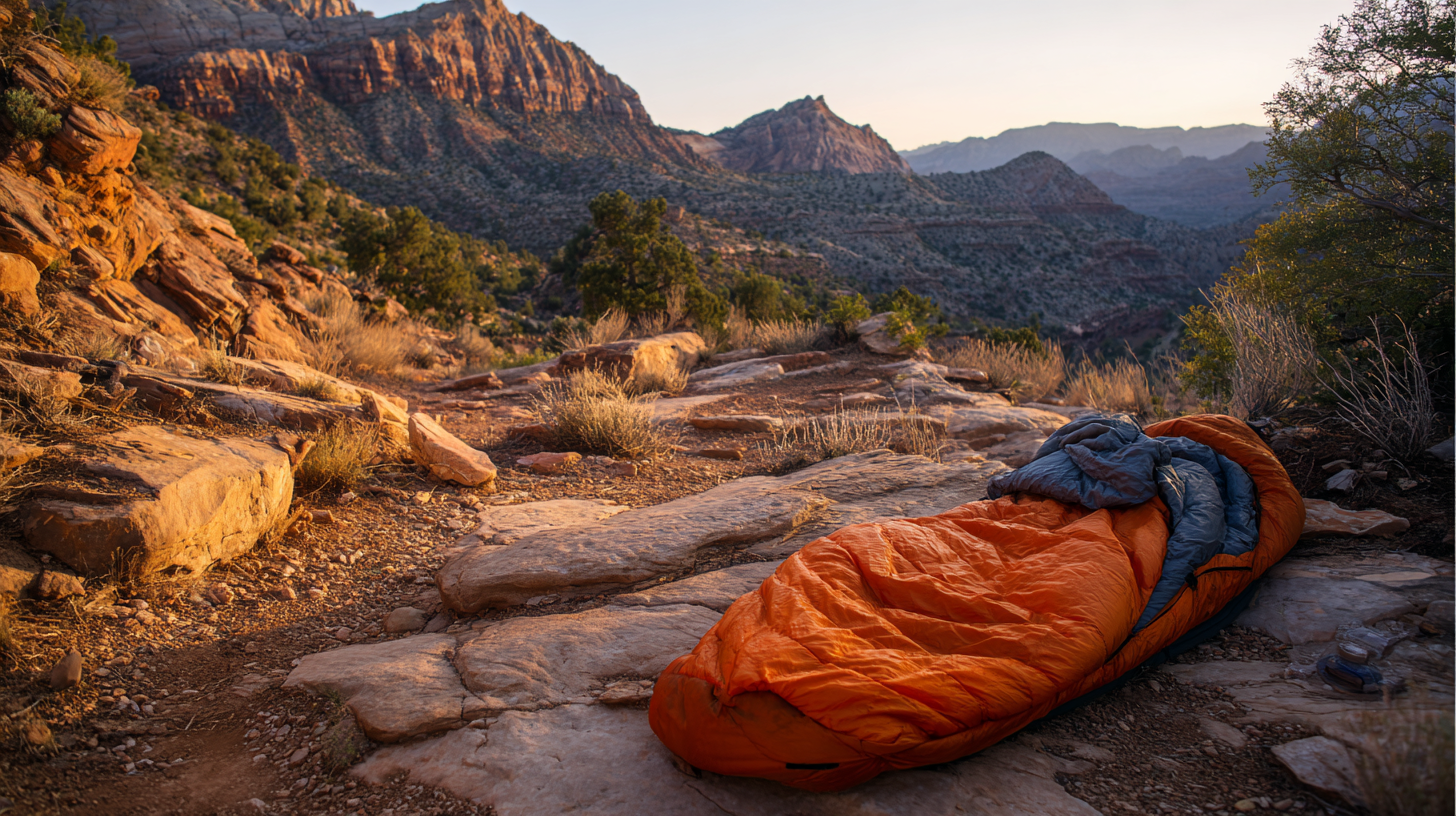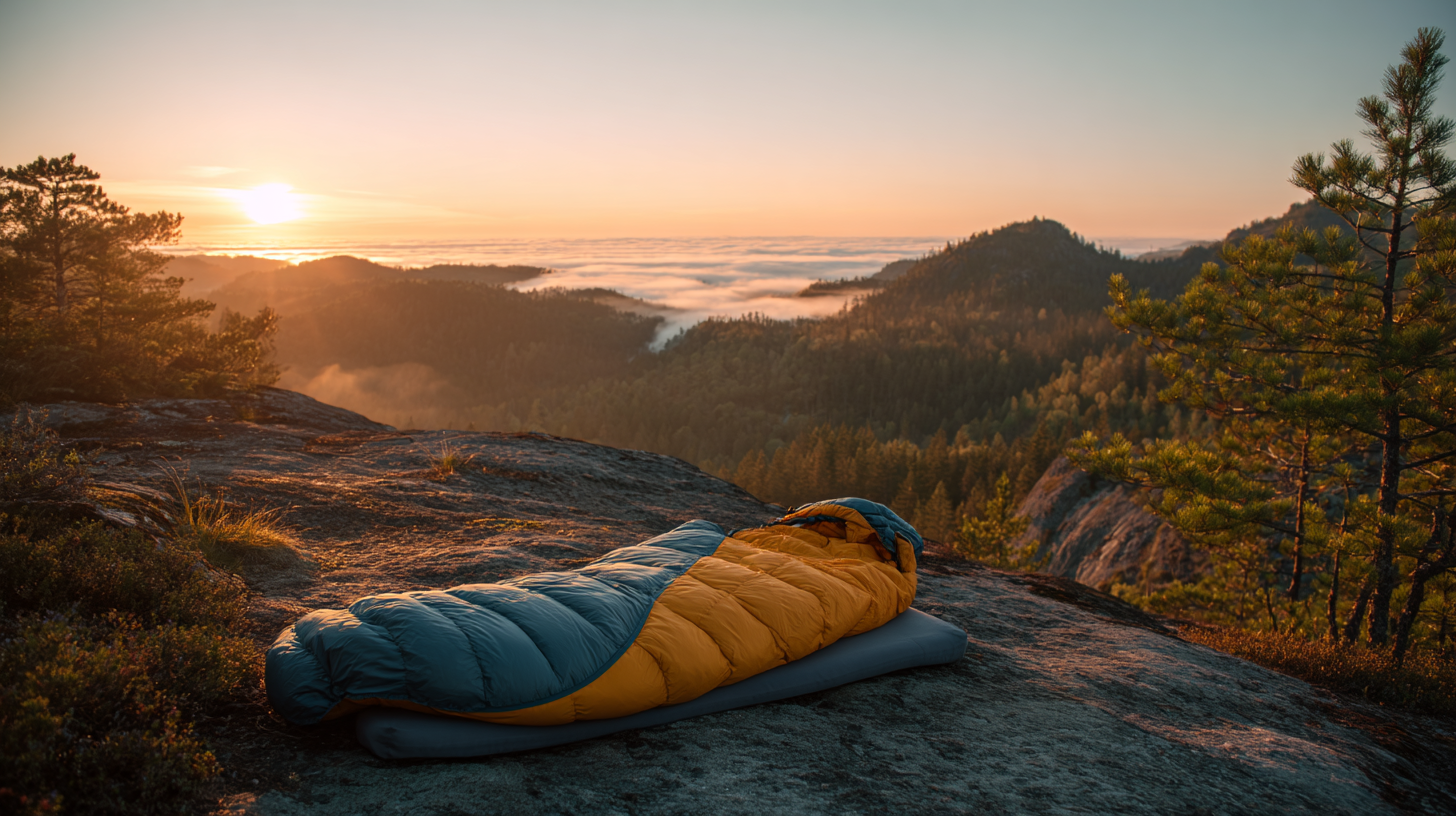Leave Your Message
-
E-mail
-
Whatsapp
When planning an outdoor adventure, one of the most critical pieces of gear you'll need is a quality hiking sleeping bag. Choosing the right Hiking Sleeping Bag can make the difference between a restful night under the stars and a sleepless, uncomfortable experience. With a myriad of options available on the market, each offering different insulation types, temperature ratings, and materials, the selection process can feel overwhelming. Moreover, understanding the importance of industry certifications—both import and export—can impact your decision-making, ensuring you invest in a sleeping bag that meets safety and quality standards. This ultimate guide aims to demystify the selection process, providing you with useful tips on how to choose the best hiking sleeping bag tailored to your specific needs and preferences, optimizing your outdoor experience for maximum comfort and performance.

When choosing a sleeping bag for your hiking adventures, understanding temperature ratings is essential to ensure a comfortable night's rest outdoors. The temperature rating typically indicates the lowest temperature at which the sleeping bag will keep an average sleeper warm. It’s crucial to assess the conditions you'll be facing; for instance, summer trips may only require a light bag rated for 35°F or higher, while winter excursions could necessitate a bag rated for 20°F or below. Always consider the weather patterns of your intended destination to make an informed decision.
Additionally, your personal comfort and sleep habits play a significant role. If you tend to feel cold when sleeping, opting for a sleeping bag with a lower temperature rating might be wise. Moreover, there are various insulation types—down and synthetic—with their unique thermal properties. Down bags, while lightweight and compressible, perform poorly when wet, while synthetic options can handle moisture better but may be heavier. By aligning your choice with both environmental factors and personal needs, you can select the perfect sleeping bag that enhances your outdoor experience.
 When it comes to choosing the right sleeping bag for your hiking adventures, evaluating fill materials is crucial. The two primary options are down insulation and synthetic insulation, each with its own advantages and disadvantages. Down insulation is known for its exceptional warmth-to-weight ratio and packability, making it a favorite among backpackers who need to minimize weight. However, it can be less effective when wet, as it clumps and loses insulation properties.
When it comes to choosing the right sleeping bag for your hiking adventures, evaluating fill materials is crucial. The two primary options are down insulation and synthetic insulation, each with its own advantages and disadvantages. Down insulation is known for its exceptional warmth-to-weight ratio and packability, making it a favorite among backpackers who need to minimize weight. However, it can be less effective when wet, as it clumps and loses insulation properties.
On the other hand, synthetic insulation offers improved moisture resistance and breathability. This makes it a practical choice for wetter conditions or for campers who may encounter dew or rain. While synthetic bags might not provide the same level of warmth per ounce as down, they often dry faster and remain insulative even when damp.
Tips: When selecting your sleeping bag, consider the climate and weather conditions of your hiking location. For dry and cold environments, down insulation may be the best choice. Conversely, for humid or unpredictable weather, opt for a synthetic sleeping bag. Additionally, always check the fill power of down bags; a higher fill power indicates better insulation efficiency and warmth for less weight.
When it comes to selecting the best hiking sleeping bag, understanding the shape and size is essential for ensuring optimal comfort during your outdoor adventures. The three primary styles—rectangular, mummy, and cocoon—offer different benefits that cater to various needs and preferences. Rectangular bags provide plenty of space to move around, making them a great option for campers who prioritize comfort and enjoy a bit of roominess. However, they may not retain heat as effectively as other shapes, which is an important consideration for colder trips.
Mummy bags, on the other hand, are designed to hug the contours of your body, maximizing heat retention while minimizing weight and bulk. This makes them particularly suitable for backpackers looking to save on space and keep warm in chilly conditions. Be sure to check temperature ratings and insulation materials, as these factors can greatly influence your overall comfort while sleeping outside.
Cocoon bags merge the best features of the other two styles, offering a cozy, shaped design that allows for some movement without losing warmth. When choosing a cocoon bag, look for ones with adjustable hoods and draft collars to further enhance insulation. Additionally, always consider your sleeping habits and the climate conditions you anticipate, as these factors will ultimately guide you to the perfect sleeping bag type for your adventures.
| Style | Shape | Weight (lbs) | Temperature Rating (°F) | Packed Size (inches) | Price ($) |
|---|---|---|---|---|---|
| Mummy | Narrow | 2.5 | 20 | 7 x 14 | 150 |
| Rectangular | Roomy | 3.5 | 35 | 10 x 18 | 120 |
| Cocoon | Snug | 2.2 | 25 | 6 x 12 | 140 |
| Mummy | Narrow | 2.8 | 15 | 7 x 13 | 180 |
| Rectangular | Spacious | 4.0 | 40 | 11 x 20 | 100 |
When selecting a hiking sleeping bag, understanding the key features that enhance performance is essential for a comfortable night under the stars. Zippers, for example, play a crucial role in temperature regulation and convenience. A two-way zipper allows for versatile ventilation, letting you adjust your bag according to the changing temperatures throughout the night. Additionally, look for zippers that are snag-free and designed to minimize heat loss, ensuring warmth while maintaining ease of use.
Hoods and draft collars are other critical aspects to consider. A well-designed hood can provide extra insulation and ensure that heat doesn’t escape from your head, which is a significant factor in body temperature regulation. Similarly, draft collars help seal off the area around your neck, preventing cold air from sneaking in. Choosing a sleeping bag with these features will not only enhance your overall comfort but also improve your sleeping experience, making your outdoor adventure all the more enjoyable.
When choosing a hiking sleeping bag, identifying reliable suppliers is crucial to ensure you receive quality gear that enhances your outdoor experience. Start by researching suppliers who have established a strong reputation in the outdoor gear industry. Look for indicators such as positive customer reviews, long-standing business history, and industry certifications. These factors can provide insight into the supplier's commitment to quality and service.
Tip: Visit outdoor gear forums and social media groups to gather feedback from fellow hikers about their experiences with different suppliers. Engaging with the community can lead you to trusted brands that are often recommended by seasoned adventurers.
Additionally, consider the warranty and return policies offered by potential suppliers. A generous warranty can indicate a supplier's confidence in their products, while a flexible return policy allows you to make purchases with peace of mind, knowing you have options if the sleeping bag doesn’t meet your expectations. Be sure to also look for environmentally responsible brands, as sustainability is becoming an essential aspect of outdoor gear quality.
Tip: Always ask about the materials used in the sleeping bags, as high-quality insulation and fabric can significantly impact warmth and durability during your hiking trips.

